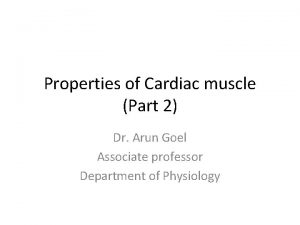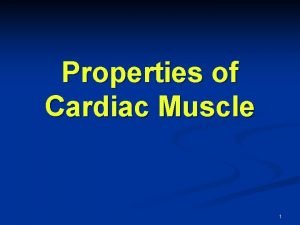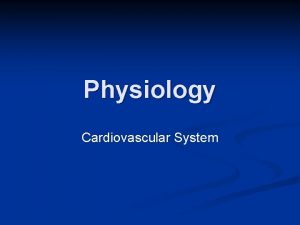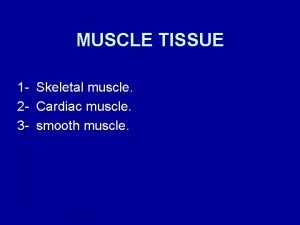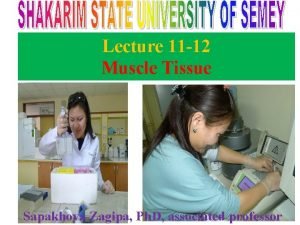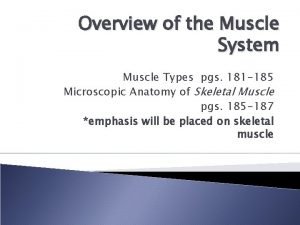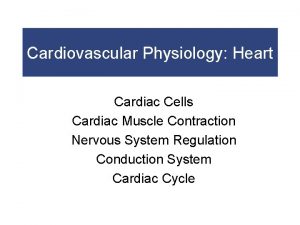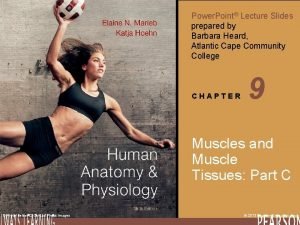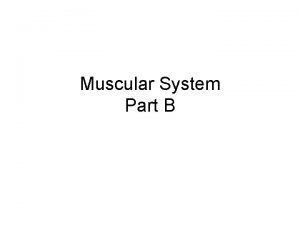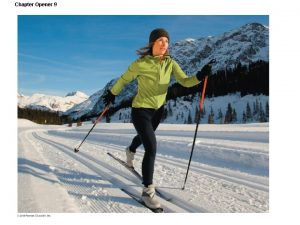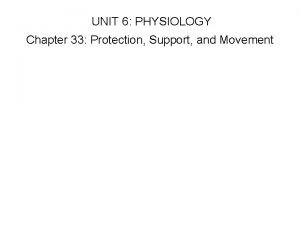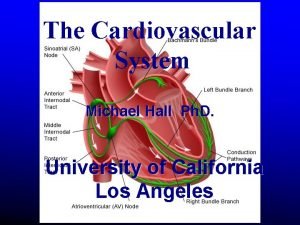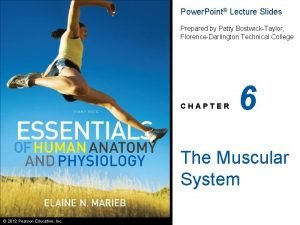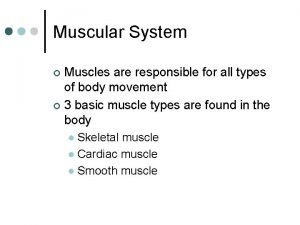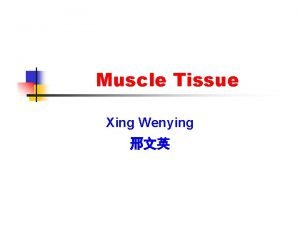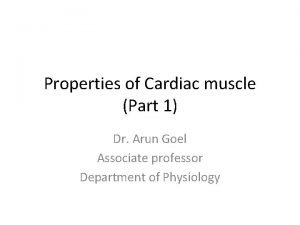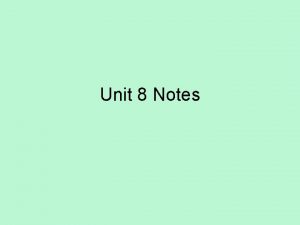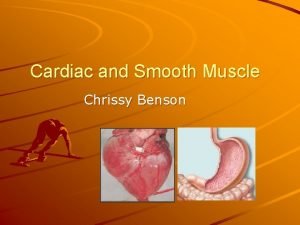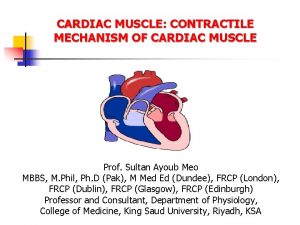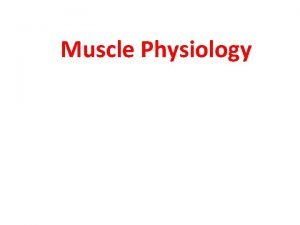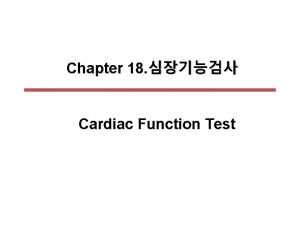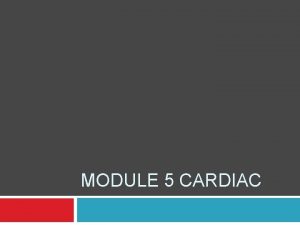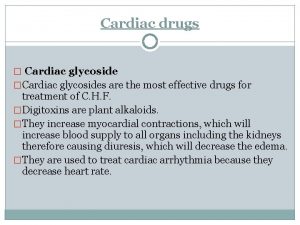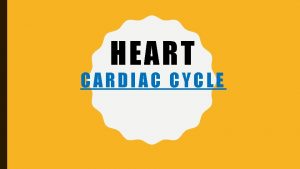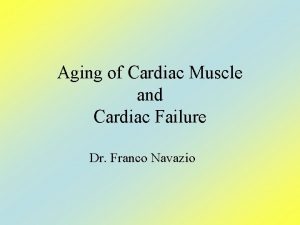Properties of Cardiac muscle Part 2 Dr Arun















- Slides: 15

Properties of Cardiac muscle (Part 2) Dr. Arun Goel Associate professor Department of Physiology

Properties of the cardiac muscle: I. Excitability II. Rhythmicity III. Conductivity IV. Contractility

Disorders of conduction and spread of impulse WPW (Wolf-Parkinson-White) syndrome Ectopic pacemakers Extrasystole and compensatory pause

Disorders of conduction and spread of impulse Stannius ligatures in amphibian heart First ligature Second ligature

Disorders of conduction and spread of impulse A- V blockage Ventricular escape Stoke Adam Syndrome

Contractility Action potential Increase in intracellular calcium Contraction Excitation-contraction coupling Atrial and ventricular myocytes can contract while pacemaker and conducting system do not Action potential and contraction in ventricle myocyte

Excitation-Contraction Coupling Mechanism by which AP causes myofibrils to contract AP passes over cardiac ms membrane AP spread to interior of cardiac ms along T tubules opening of Ca 2+ channels in sarcolema Ca 2+ diffuses down gradient into cell through T tubules Opening of Ca 2+-release channels in SR Ca 2+ binds to troponin & stimulates contraction

Excitation-Contraction Coupling During Repolarization At the end of plateau of cardiac AP Ca 2+ is rapidly & actively pumped out via a Na+- Ca 2+- exchanger Cessation of the contraction

Excitation-Contraction Coupling and Relaxation of Cardiac Muscle

Factors affecting myocardium 1. Cardiac innervation 2. Effect of ions concentration in ECF 3. Physical factors 4. Blood flow 5. Chemical factors (drugs)

• • Chronotropic Ionotropic Bathmotropic Dromotropic

Factors affecting myocardium 1. Cardiac innervation 2. Effect of ions concentration in ECF 3. Physical factors 4. Blood flow 5. Chemical factors (drugs)

Factors affecting myocardium 6. Mechanical factors: a. b. c. All or none law Staircase phenomenon Starling’s law of the heart

Starling’s law of the heart ■ “Length-tension relationship” ‘Within limits, the greater the initial length of the fiber, the stronger will be the force of its contraction; However, overstretching the fiber as in heart failure its power of contractility decreases’ i. e. within limits, the power of contraction is directly proportional to the initial length of the ms ■ Cardiac ms accommodates itself (up to certain limit) to the changes in venous return

Pressure-volume loop
 Properties of cardiac muscle
Properties of cardiac muscle Autorythmicity
Autorythmicity Properties of cardiac muscle
Properties of cardiac muscle Properties of cardiac muscle
Properties of cardiac muscle Function of muscle
Function of muscle Comparison of skeletal cardiac and smooth muscle
Comparison of skeletal cardiac and smooth muscle Characteristics of skeletal smooth and cardiac muscle
Characteristics of skeletal smooth and cardiac muscle Hypercalcemia ecg
Hypercalcemia ecg Slide
Slide Smooth muscle gap junctions
Smooth muscle gap junctions Comparison of skeletal cardiac and smooth muscle
Comparison of skeletal cardiac and smooth muscle Cardiac muscle mitochondria
Cardiac muscle mitochondria Cardiac muscle
Cardiac muscle Characteristics of skeletal smooth and cardiac muscle
Characteristics of skeletal smooth and cardiac muscle Characteristic of cardiac muscle
Characteristic of cardiac muscle Structure of muscle cell
Structure of muscle cell
